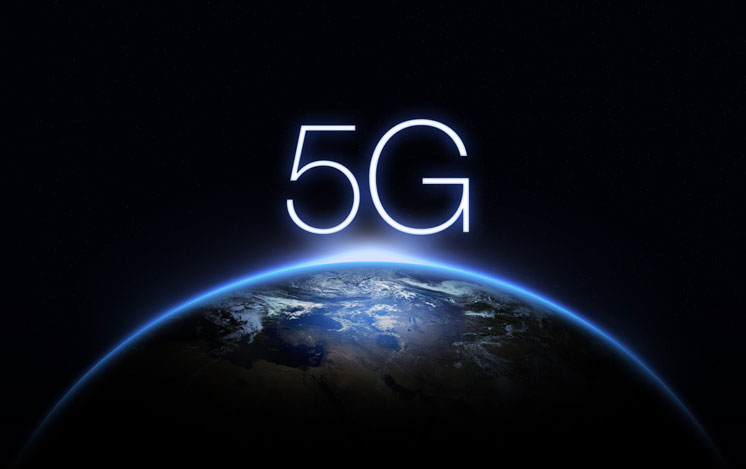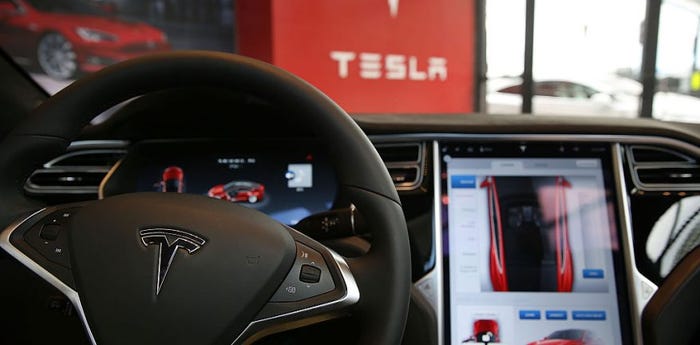Why 5G Connectivity Is Much, Much More Than Faster Downloads
Communications providers are leveraging 5G connectivity to help industries and governments develop connected, smart cities.
June 27, 2019

By Sanjay Kumar
The hype and buzz surrounding 5G connectivity is reaching feverish levels as consumers and businesses continue to clamor for ever faster download speeds, lower latency and greater responsiveness. Video streamers and mobile gamers will especially love the massive bandwidth this fifth generation of mobile connectivity has to offer.
The manufacturers are equally eager because users will need to purchase new mobile devices to take advantage of 5G’s capabilities.
The Communication Service Providers (CSPs), meanwhile, have been moving fast to develop new business models to rescue them from a lengthy and dramatic downturn. According to a 2018 Juniper Research study, they’re facing an average annual revenue decline of 10% through 2023.
Thanks to the development and convergence of 5G connectivity, the Internet of Things (IoT) and the promise of building smart cities, they have at least one new, significant opportunity as providers of “intelligent connectivity.”
It’s a Great, Big, Beautiful Tomorrow
And in 8–10 years, powered by this intelligent connectivity, smart cities will offer a new way of living that will be as taken for granted then as it is being fantasized about now. We’re already seeing many of the parts being assembled.
ABI Research has been urging CSPs to pursue what it terms “UnTelco” strategies and opportunities beyond their traditional offerings to foster revenue growth. It defines UnTelcos as business opportunities for CSPs to be more than just connectivity providers to enterprise verticals.
It appears they’ve taken that advice, aggressively growing their capabilities by developing a host of value-added services and applications. They’re partnering with automobile manufacturers building connected cars, joining local and federal law enforcement initiatives, collaborating with retail home and business security offerings and working with the health care industry to make cities smarter.
5G: 100 Times Faster Than the Fourth Generation
This new business model of intelligent connectivity was not possible with previous generations of mobile data technology. With 5G, new streaming analytics applications — with AI layered on top and IoT their linchpin — can collect and aggregate previously unimaginable amounts of data right at the edge. For perspective, 4G is 100 times slower than 5G’s theoretical capabilities of transmitting data at 10 gigabits per second. (A 2-hour-long movie can be downloaded in 3.6 seconds on 5G, compared to 6 minutes on 4G or 26 hours on 3G.)
In other words, for those of us working to make this futuristic world a reality, 5G is much more gratifying than having the ability to fire off a weapon faster than your opponent in a mobile game. And instead of saving (or terminating) lives in a fantasyland, it can save lives in the real world.
That’s an explanation of the theory. Here’s one example of what it looks like in practice: You’re involved in an accident while driving a connected car in a connected city. A sensor alerts the police, other emergency services and even insurance companies, and instantly transmits pertinent information such as your blood type and how to contact family members. When you get to the hospital, medical personnel will be poised to act. Information and Communications Technology (ICT) vendor Ericsson has devoted a great deal of thought leadership regarding the promise of 5G to the healthcare industry.
This type of work isn’t even new; the AT&T Foundry for Connected Health, in conjunction with the Texas Medical Center Innovation Institute, has been providing services like this in Houston for three years. At the same time, the GENIVI Alliance has been working with the world’s largest automobile manufacturers to develop models and standards of how they can better participate in futuristic smart communities. This includes integrating telematics systems – which record and map a car’s location, speed and behavior – with other ecosystems such as those involving traffic management and healthcare facilities.
Data Security Is at the Forefront
This brings us to the topic of data security. We’re extremely conscious of popular fears that personal data is everywhere and everyone has access to it. A major provision of intelligent connectivity involves proactive, predictive and prescriptive security measures in real time that protect the integrity of personal information and other data as it moves across connected ecosystems.
As the ecosystem continues to develop, data will be encapsulated with its own secure, intelligent model that dictates where and how it can be used. Intelligent connectivity also implies intelligent data security. Consumers need to feel extremely comfortable that their data is not being used outside of their desired outcomes and always for the betterment of their lives.
As one example, Alphabet’s Sidewalk Labs, which is involved in developing a smart community called Quayside in Toronto, is publicly discussing its data governance principles to assuage citizens’ privacy. A key provision is that Quayside residents’ data will not be proprietary to any single organization and that it will be stored in a “trust” that any user can access.
Again, the fulfillment of this vision — when fully enabled smart cities finally become commonplace — is almost a decade away. It will be a way of life for many of us. In the meantime, we’ll still enjoy incredibly satisfying experiences when we download movies and play video games.
Sanjay Kumar is the managing director of telecom, media and connected at Cloudera.
You May Also Like

.png?width=700&auto=webp&quality=80&disable=upscale)
.png?width=700&auto=webp&quality=80&disable=upscale)
.png?width=300&auto=webp&quality=80&disable=upscale)
.png?width=300&auto=webp&quality=80&disable=upscale)
.png?width=300&auto=webp&quality=80&disable=upscale)
